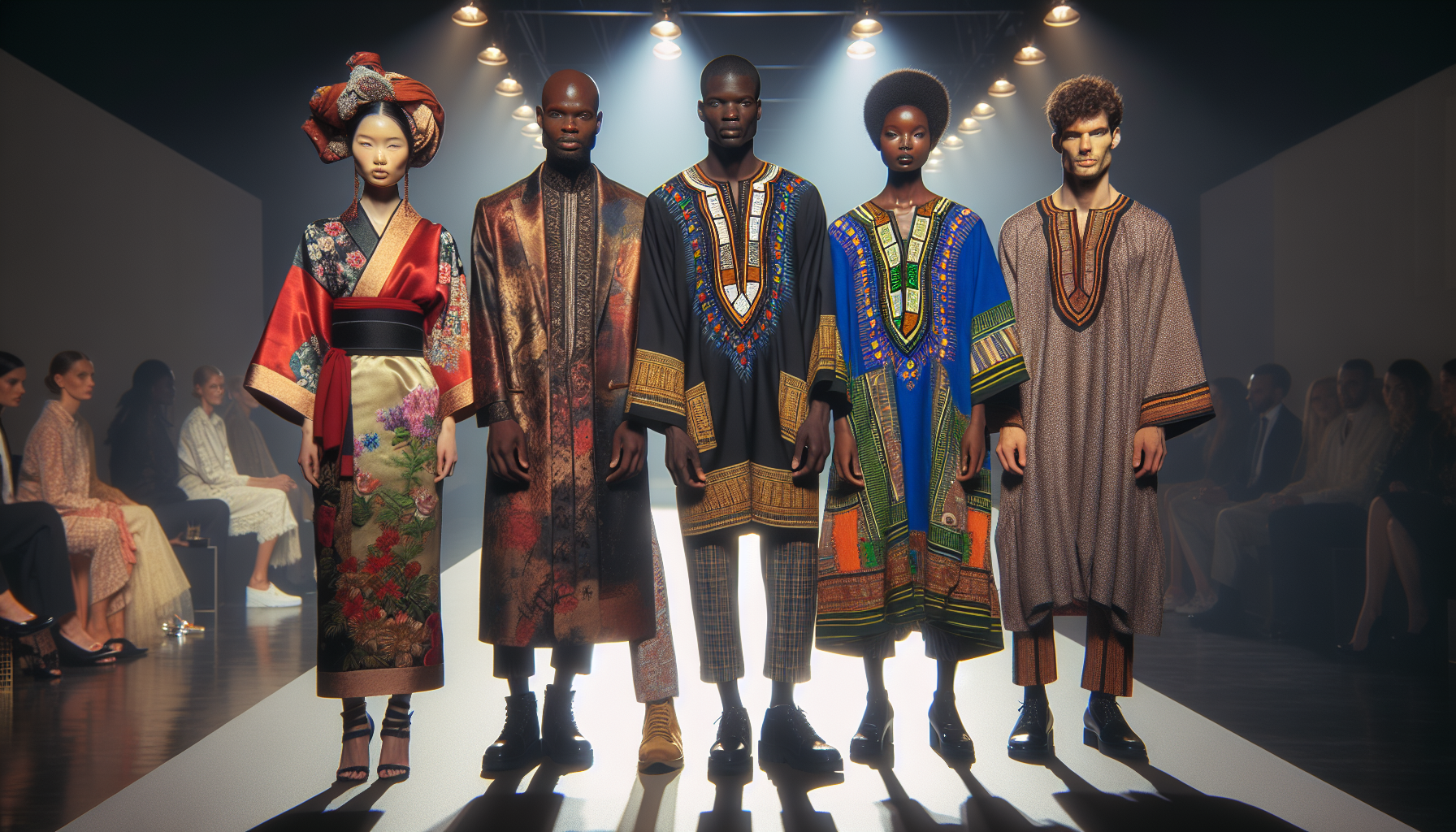In the unstitched fabric of society, fashion serves as a compelling means of expression—a visual language that communicates volumes about the cultural identity of individuals and communities. While fashion is often perceived as a fleeting interest in the latest trends, it has profound roots in portraying cultural identity, often reflecting values, traditions, and social status.
Fashion as an Emblem of Tradition
Throughout history, clothing has been a distinctive marker of cultural heritage. Regarding traditional attire, every thread and hue carries the essence of centuries-old practices, societal norms, and religious beliefs. The kimono in Japan, for instance, is a testament to craftsmanship and aesthetics deeply ingrained in Japanese culture. Similarly, the vibrant Masai beadwork and shukas of East Africa speak to communal ties and social roles within the tribe.
Cultural fashions are not static; they evolve with time while retaining fundamental elements that signify their origins. Every generation adds its variation, balancing historical reverence and contemporary relevance. Ceremonial occasions, such as weddings and festivals, often become spectacles of this cherished cultural expression in full flair, further entrenching fashion’s role as a bastion of identity.
Daily Wear: A Subtle Cultural Dialogue
Cultural identity is not only paraded in grandiose garments during festive times but subtly woven into the fabric of daily wear. The vibrant colors and patterns seen in everyday attire can denote an individual’s roots and origins. From the Batik patterns of Indonesia to the Scottish tartan, these designs are a form of non-verbal communication that tells a personal and collective narrative.
Traditional motifs and styles have been adapted into daily wear in many cultures, offering comfort and a connection to heritage. For instance, in India, the kurta has transitioned from formal clothing to everyday wear, blending seamlessly with modern aesthetics while maintaining its cultural significance. This adaptation has kept artistic fashion relevant and accessible, ensuring that identity remains interwoven in the threads of daily life.
The Global Stage of Cultural Fashion
The role of fashion as an expression of cultural identity is not limited to local or personal realms—it is also a statement on the global stage. Fashion weeks in New York, Paris, Milan, and beyond often showcase a mélange of cultural influences, helping to spread awareness and appreciation of diverse cultural heritages.
Designers draw inspiration from their cultural backgrounds, weaving artistic storytelling into collections broadcast to an international audience. Icons like Dries Van Noten have been lauded for their ability to merge disparate cultural elements into fashion that resonates globally. This cross-cultural dialogue opens up opportunities for mutual respect and understanding through the shared language of fashion.
The Perils of Cultural Appropriation in Fashion
However, the intersection of fashion and cultural identity is a delicate terrain that requires a thoughtful approach to avoid offense. Cultural appropriation—a topic of substantial debate—occurs when elements of a culture are taken out of context and used in a manner that can be perceived as disrespectful or exploitative.
The fashion industry must tread carefully to ensure that cultural expressions are celebrated rather than commodified without proper acknowledgment or understanding. As consumers and creators, there’s a collective responsibility to honor the origins and significance of cultural fashion elements, promoting appreciation rather than appropriation.
The Personal Touch: Fashion as Individual Expression
While cultural fashion is a powerful tool for representing a shared identity, it also provides an avenue for individual expression. In a diverse and interconnected world, many navigate multiple cultural identities simultaneously. Fashion allows these individuals to blend cultural elements creatively, crafting an aesthetic unique to their narrative.
This fusion of cultural influences reflects an evolving identity that borrows from various traditions to construct a contemporary persona. It’s a testament to fashion’s versatility, allowing individuals to celebrate their heritage while embracing the dynamism of change.
Conclusion
The tapestry of fashion is rich with the threads of cultural identity. From the grand displays of traditional attire to the integrated patterns of daily wear and from the international showcases to the nuanced individual styles, fashion offers a profound means of expressing and preserving cultural heritage. It is a potent mediator of personal and collective identity, acting as a mirror and a bridge between the past and the future.
As the world grows more interconnected, the stories woven by fashion will continue to highlight the vibrancy and diversity of different cultures. For better or worse, fashion will remain a determinant of identity, underscoring its significant yet intricate role in the tapestry of human expression.

